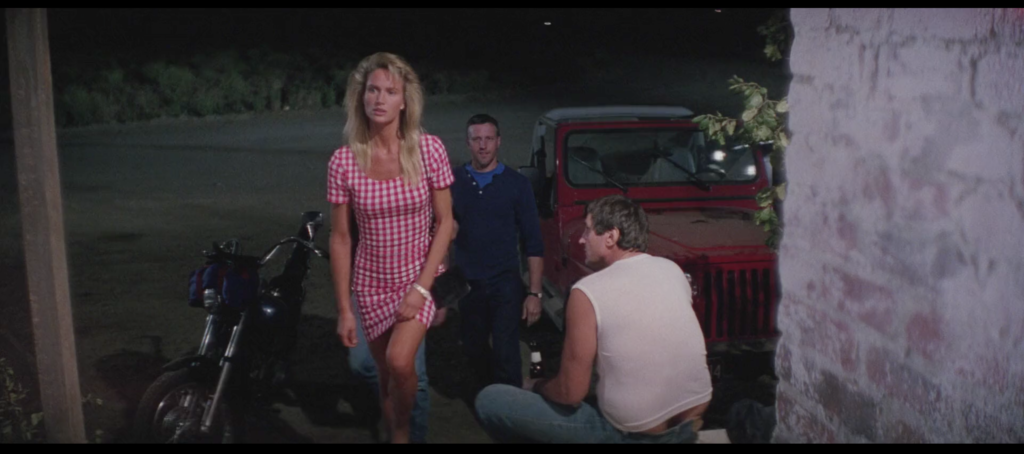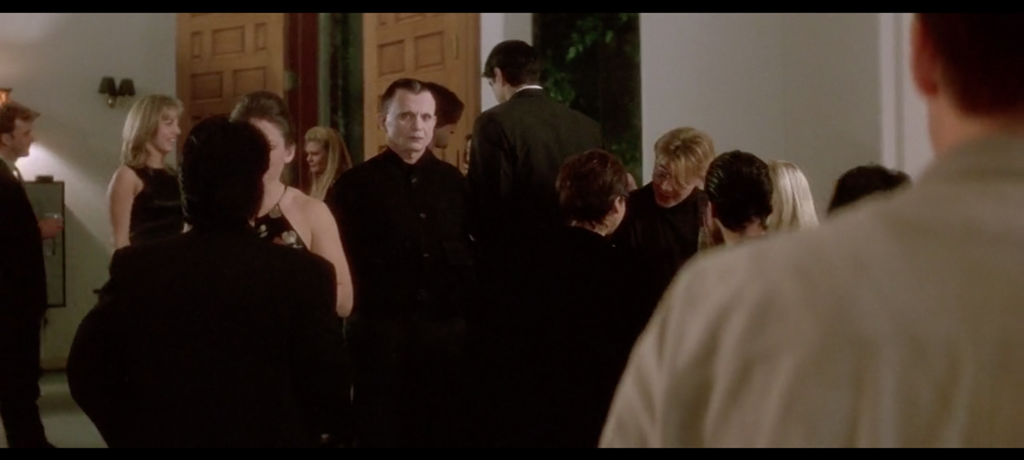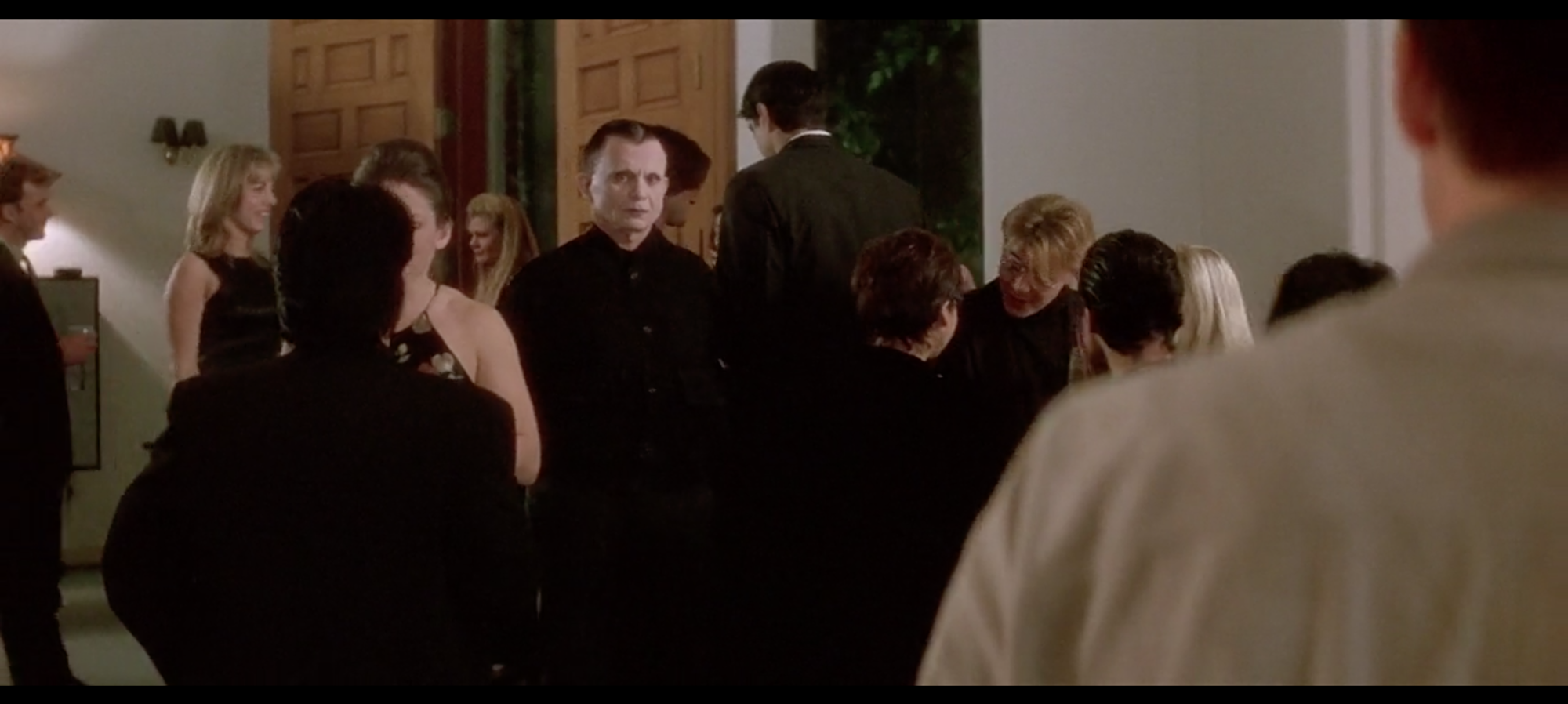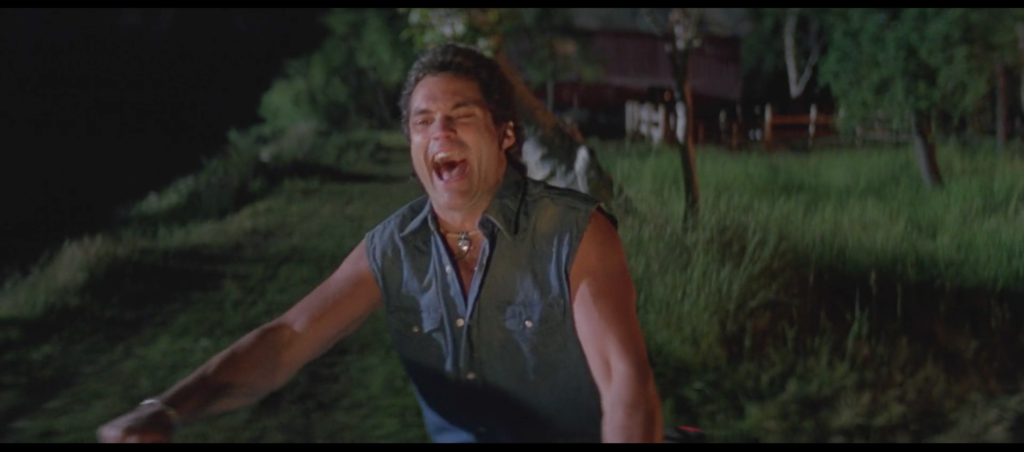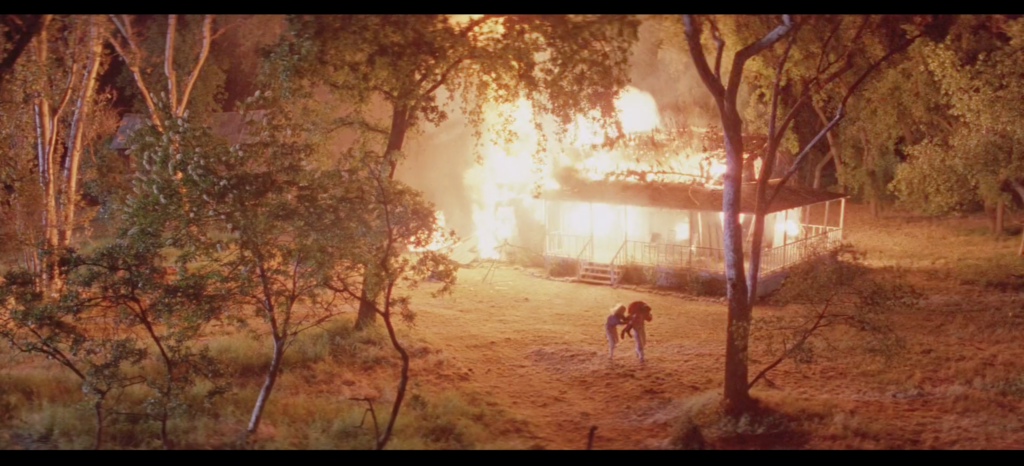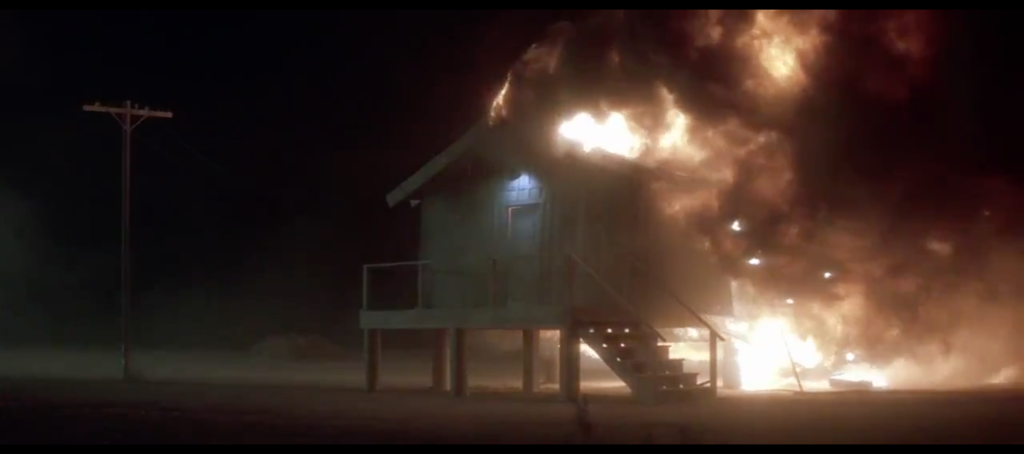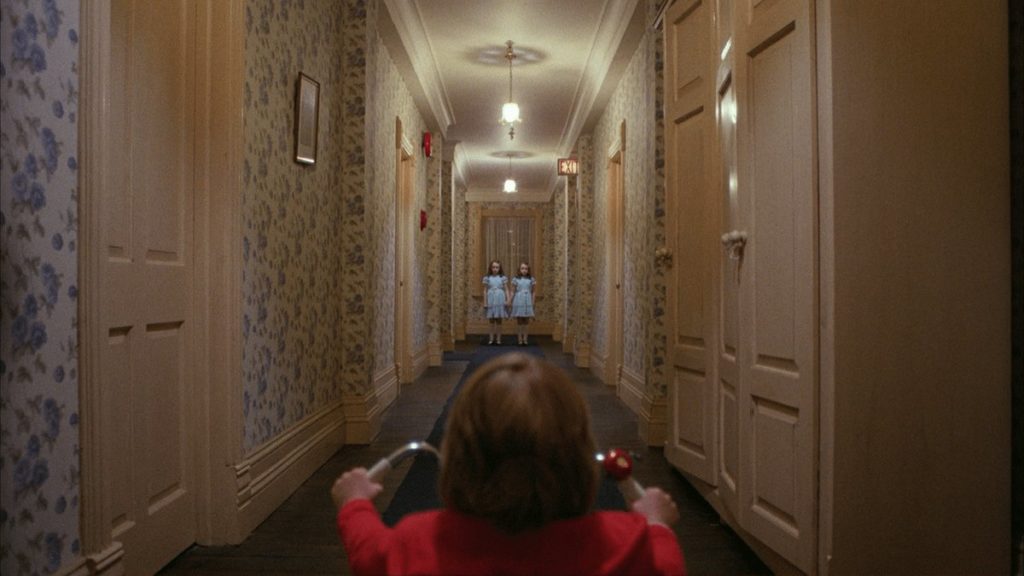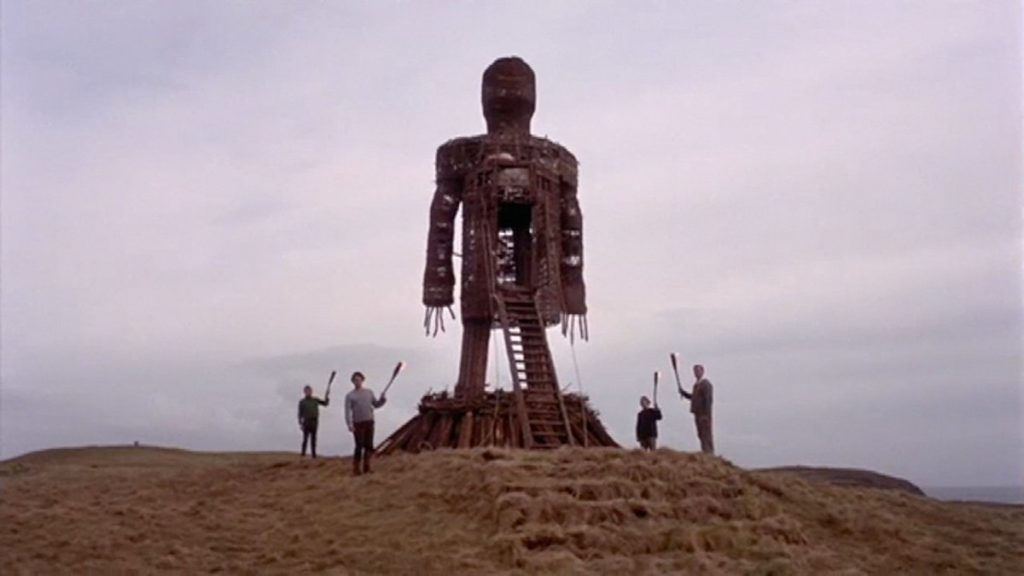Posts Tagged ‘lost highway’
143. We’ve met before, haven’t we?
May 23, 2019Now, I’m not saying that Dr. Elizabeth Clay is the white-magic call to the shadow-self Dweller on the Threshold response, arriving at a raucous but fraught gathering to force a handsome man who favors loose beige jackets to face his innermost desires because he is afraid to do so himself while he charts a course for confrontation with a wealthy psychotic businessman in charge of a barely disguised criminal enterprise (played by an actor of Italian extraction born in New York City in 1930), but I’m not not saying it either.
“I’m There Right Now”: Inside David Lynch’s Scariest Scene
April 4, 2019When I love a horror film, I want to live in it. I mean this as a physical proposition. If a horror movie I adore has a great scene set in a memorable enclosed space, my instinct, no matter how awful the things that happen in that space are, is to walk right into it. I’d like to be in Leatherface’s bone room, in the Overlook Hotel’s elevator lobby, in the bare wooden attic where the Cenobites kill Frank Cotton, in Scarlett Johansson’s black liquid void. I want to feel the walls, tap the floor with my foot, smell the viscera. You know, make myself at home.
I’d eventually like to leave again, of course, which is usually what separates me from the people who do visit those places within the movies themselves. But there’s weird, cold comfort in those spaces. They’re inviting, to me anyway, and it is not my custom to go where I am not wanted.
From the Red Room in Twin Peaks to its blue counterpart Club Silencio in Mullholland Drive, David Lynch has created many of these spaces. As a director, Lynch is to ambient room tone what Martin Scorsese is to gangsters listening to “Gimme Shelter.” Evoking a sense of space, and what it’s like to be within four particular walls (curtains optional), is a major part of his project.
In one such space, he even threw a party.
I wrote about the Mystery Man scene from David Lynch’s Lost Highway for The Outline.
049. Jimmy, or The Laugh
February 18, 2019It’s not all fun and games. No, it’s not all fun and games. We joke here at Pain Don’t Hurt, we laugh here, because Road House is a fun and often (nearly always) funny movie. But the Dalton Path leads inexorably toward darker days and nights.
This is Jimmy, Brad Wesley’s right-hand man, chief enforcer, and bastard son. (Non-canonically.) We’ve met him before during the nearly fifty days I’ve been writing about Road House, but he has remained a liminal presence, his dark eyes and blue denim looming in the background like a pale man at a party in a David Lynch film. He accompanies Wesley to Red Webster’s store for their weekly payout but doesn’t say a word. He drives Karpis (unnamed handsome man, in the parlance of the film itself) to fuck the store up later on but never gets out of the car. He laughs as Wesley beats O’Connor for bleeding too much but never throws a punch. He scoffs at Dalton and the Doc as he and Ketchum (the other unnamed goon) spy on them but doesn’t make a move.
It’s at the precise moment when Jimmy is finally set loose, battling Wade Garrett and the entire Dalton-led bouncing staff of the Double Deuce after Dalton cruelly shuts down Denise’s Wesley-approved antagonistic striptease (?!), that things go bad.
Brad Wesley, who moves through life grinning wryly at virtually everyone and everything he sees, has taught his boys well. All of them, even Tinker, have learned to laugh at the misfortune of others, and at nothing else. But Jimmy is Brad’s best boy, and his is the deepest laugh, the fullest laugh, the loudest, the longest—and the last.
Jimmy emits this piercing and preposterous peal—the supervillain laugh to end them all—after blowing up the shack where Dalton’s landlord Emmett lives (and, judging from the size of the explosion, cooks meth) in the middle of the night. So delighted is he by the night’s mean work that he actually stops his getaway motorcycle to look back, take in the extent of what he has done, and enjoy the moment to its fullest. He laughs like a man not acquainted with the concept in any context where the smell of blood and cordite is not on the night wind.
In this moment, Jimmy exhausts the good humor of the Wesleyan Goons with one titanic cackle of pure, joyous malice. No longer are they the cocky cut-ups who run over car dealerships with monster trucks or get beat up in bars. From here on out they exist to kill. Jimmy inhales horseplay and exhales murder. And Dalton is the man who breathes that fire back in.
All Hail the Monumental Horror-Image
August 17, 2018You may not have heard of the monumental horror-image before, but like the Supreme Court and pornography, you know it when you see it. The little girls in The Shining, the statue of the demon in The Exorcist, the titular entities in The Wicker Man and It Follows: Though they’re rarely discussed compared to jump scares, gore, monsters, slashers, torture, or other hallmarks of the genre, the monumental horror-image is everywhere. Chances are good that if a movie has ever really frightened you, you have strange, standalone sights like these to thank.
The things you see in images like these aren’t brandishing a chainsaw or baring a mouthful of fangs, but something about them feels completely terrifying anyway. It’s not just scary, it’s wrong, like you’re seeing something that should not be.Why “monumental?” In part, because subjects of these images are horrifying more for what they represent than what they actually do. In most cases, they don’t do anything but stand there. Yet seeing them alone is enough to indicate that something dreadful going on. Just as monuments in real life commemorate events or embody ideals, these images function as horror’s forward-facing surface — “monuments” to the deeper evil they connote.
Inspired by a twitter thread I did on the topic that went viral recently, I wrote about the monumental horror-image for The Outline, and they made an incredible visual presentation out of it that you really should check out if this subject interests you at all. This piece was nearly 20 years in the making and i’m so proud of how it turned out.

